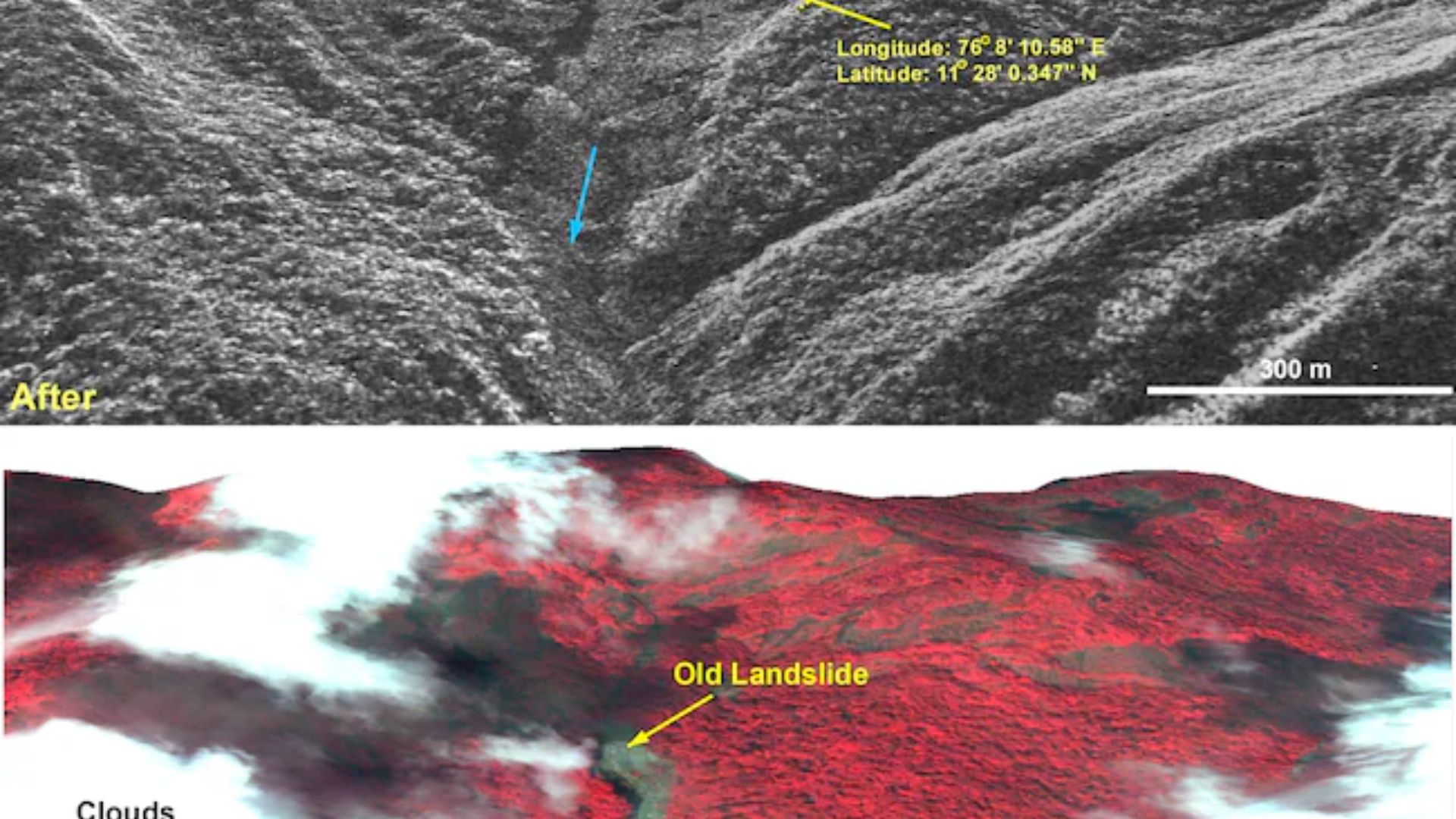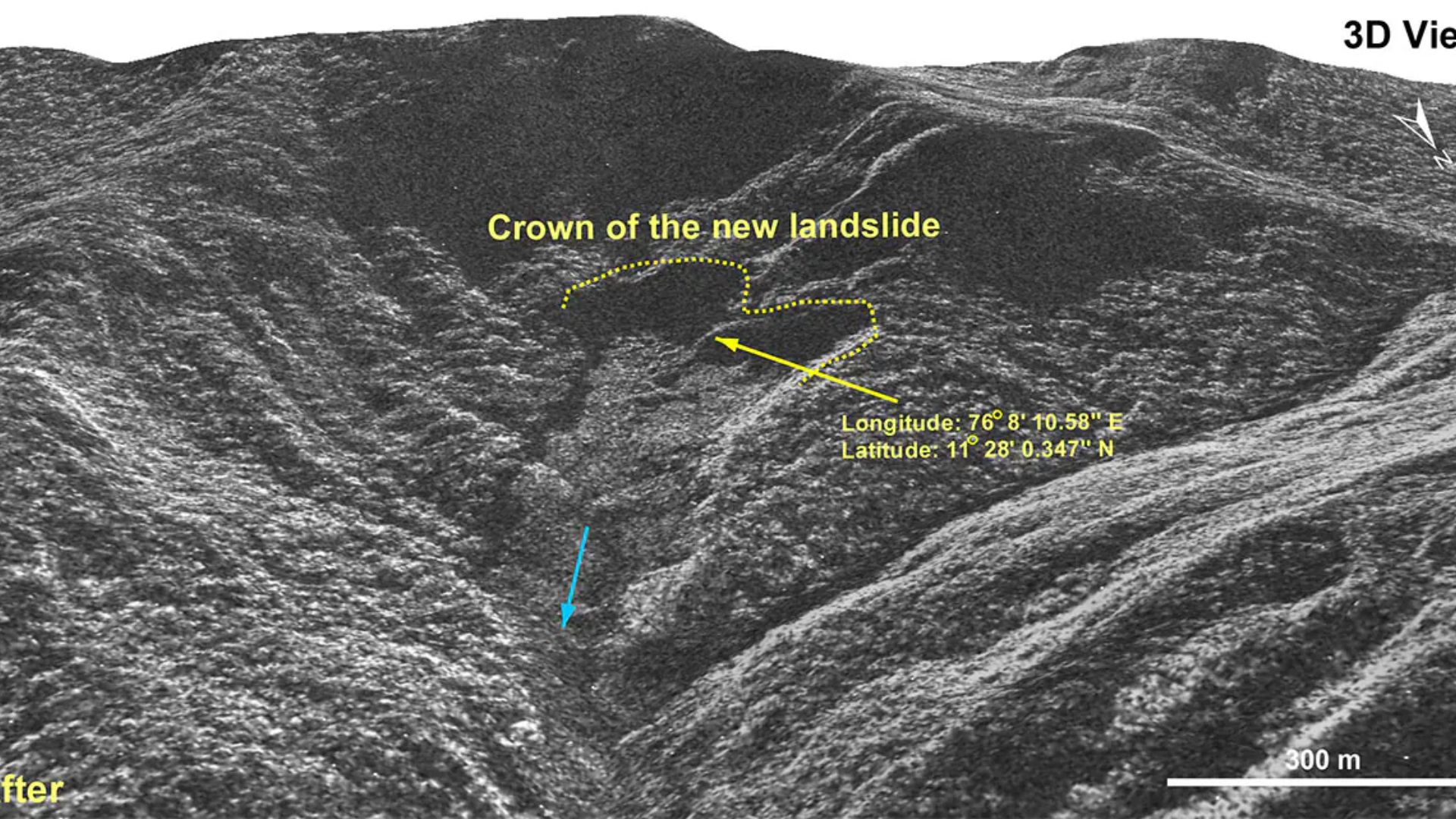Recent satellite images have highlighted the extensive devastation caused by landslides in the Wayanad district of Kerala, India. The images, captured by advanced Earth observation satellites, provide a stark view of the region’s altered landscape, showcasing the aftermath of intense monsoon rains that triggered the landslides.
Visual Evidence of Destruction
The satellite images reveal large swathes of land scarred by the landslides, with entire hillsides sheared off and debris fields stretching across what were once lush, green landscapes. The visual evidence shows the sheer scale of the destruction, including collapsed structures, blocked roads, and damaged farmlands. The disruption to natural vegetation and the displacement of soil and rocks are clearly visible, illustrating the power and impact of the natural disaster.


Impact on Communities and Environment
The landslides have not only caused significant environmental damage but have also severely affected local communities. The images show areas where homes and infrastructure have been buried or swept away, highlighting the urgent humanitarian needs for those affected. The destruction of farmland and the blockage of transportation routes have further compounded the challenges faced by residents, impacting their livelihoods and access to essential services.
Role of Satellite Imaging in Disaster Response
Satellite imaging plays a crucial role in disaster response and management. These images help authorities assess the extent of the damage quickly and accurately, facilitating efficient deployment of rescue and relief operations. They also aid in identifying areas at risk of further landslides, allowing for preemptive measures to protect vulnerable populations and infrastructure.
The recovery from such extensive landslides will require coordinated efforts in terms of rebuilding infrastructure, restoring agricultural lands, and providing support to displaced families. The satellite data will continue to be invaluable in monitoring ongoing risks, planning rehabilitation projects, and guiding sustainable land management practices to prevent future disasters.
The satellite images of Wayanad landslides offer a sobering glimpse into the destructive power of natural disasters exacerbated by extreme weather events. They underscore the need for comprehensive disaster preparedness and response strategies, as well as the importance of technology in mitigating the impact of such events. As Kerala embarks on the long road to recovery, the detailed information provided by satellite imagery will be an essential tool in rebuilding and enhancing resilience against future threats.






















